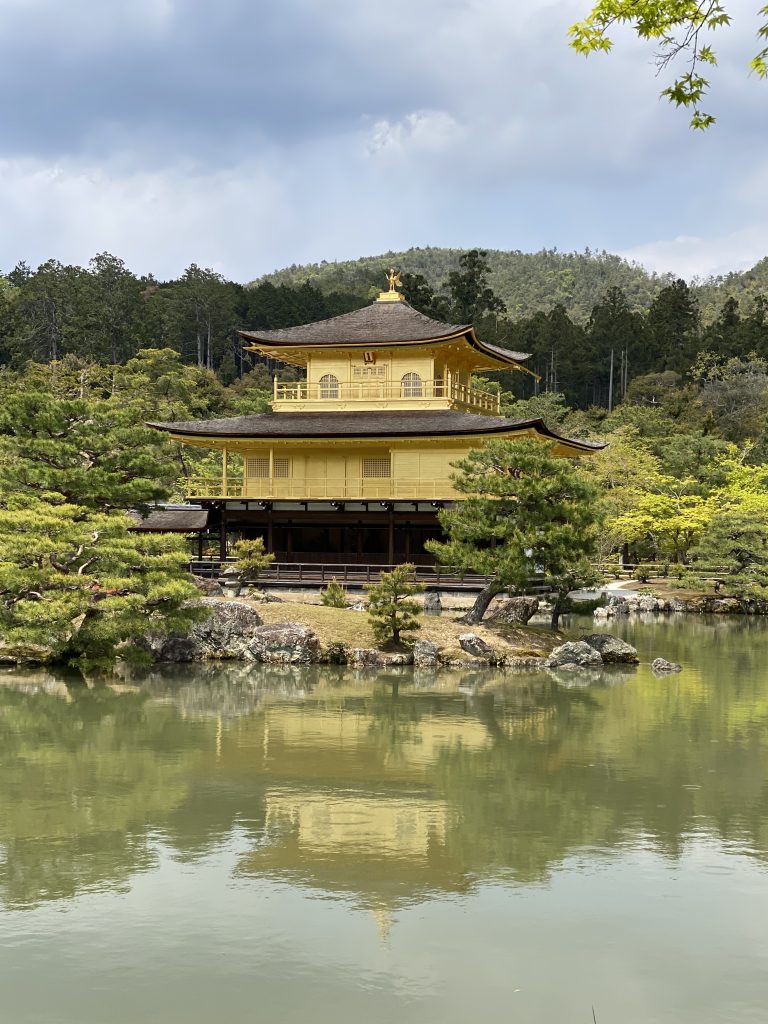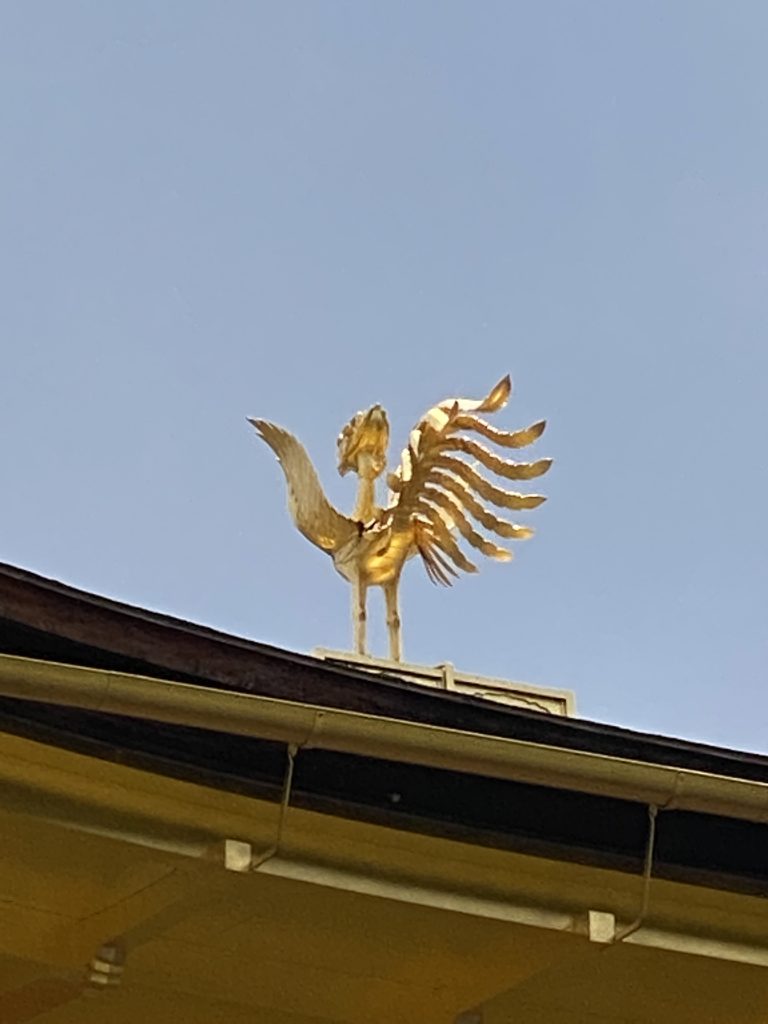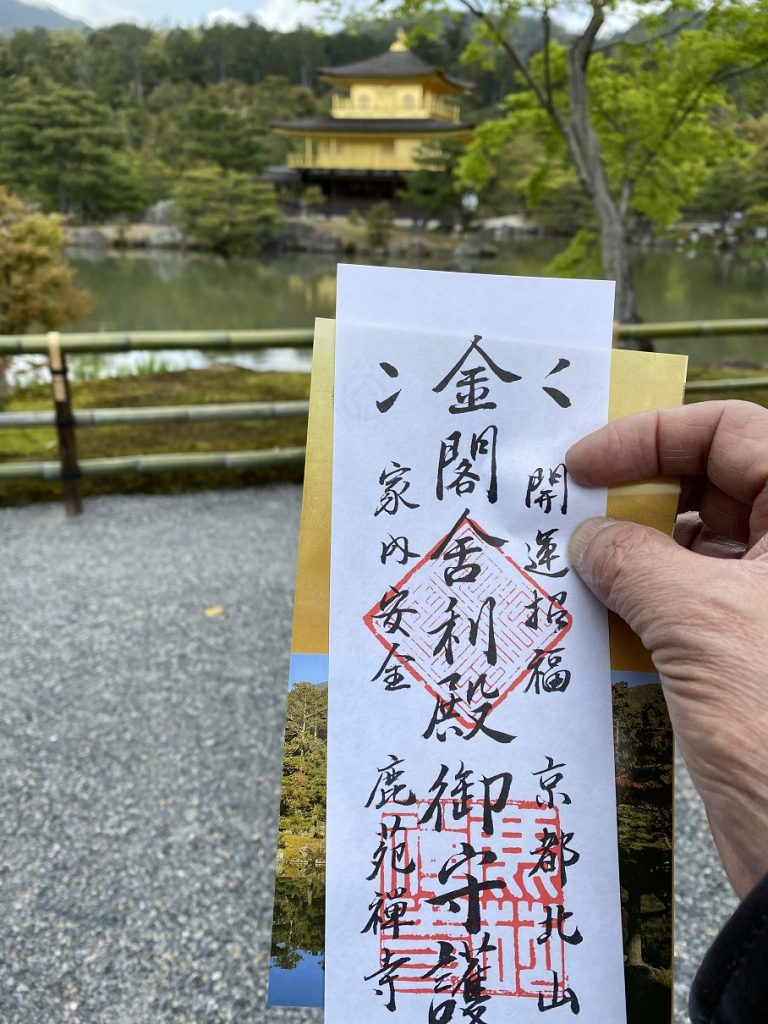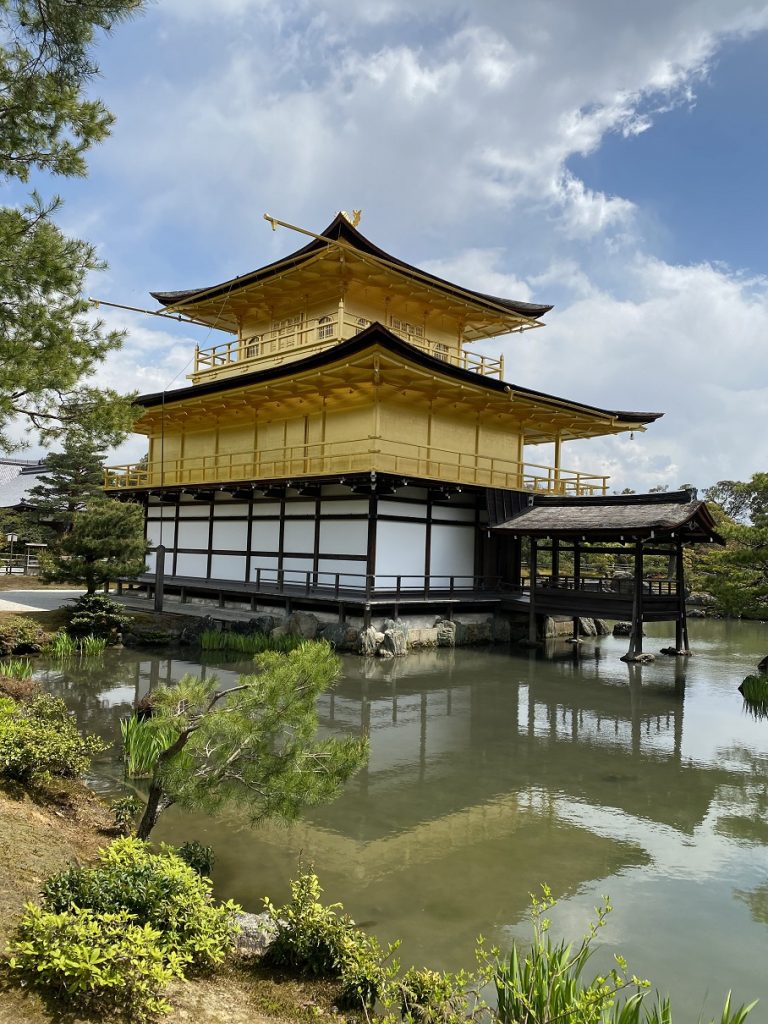I uploaded Kinkakuji YouTube. Please take a look at that.




Kinkaku is a shariden, a Buddhist hall containing relics of Buddha.The pavilion is a temple that is formally named Rokuon-ji. Temple, but commonly called Kinkaku-ji Temple, or Temple of the Golden Pvilion.Rokuon-ji is a Zen Buddhist temple, in the Shokokuji School of the Rinzai sect.
This area was originally the site of a villa called Kitayama-dai and owned by a statesman , Sionji Kintsune. Ashikaga Yoshimitsu, the 3rd shogun of the Muromachi period, took a liking to the and acquired it from the Sionji family in 1397. He then built his own villa, which he named Kitayamaden.
The garden and buildings, centered on the Golden Pavilion, were said to represent the Pure land of Buddha in this world. The villa also functioned as an official guesthouse, welcoming Emperor Gokomatsu (Father of Zen teacher, Ikkyu) and other members of the nobility.
Trade with China prospered during the Muromachi period, and the villa reached its height of glory as the hear of what became known as Kitayama Culture.
After Yoshimitsu died, in keeping with his will, the villa was converted into a temple by the piest Muso Kokushi who became the first abbot. The temple’s name , Rokuon-ji , was derived from the name Yoshimitu was given for the next world, Rokuon-in-den.
In 1994, Rokuon-ji Temple was registered as a World Cultural Heritage Site.
Gold foil on lacquer covers the upper two levels of Kinkaku, and a shining phoenix stands on top of the shigled roof. The first level is built in the shinden style of the 11th-century imperial aristocracy, the second level is in buke style of the warrior aristocracy, and the top level is on the Chinese zenshu-butsuden. Overall, Kinkaku is representative of Muromachi-period architecture.
●Originally built in the Kamakura period(Samurai government:1185-1332) as an aristocrat’s country villa, and retired shogun Ashikaga Yoshimitsu bought it in 1397 and it was turned into a supremely refined and rlegant country villa called Kitayama-dono (the Kitayama Palace) .
After his death it reverted into a temple called Rokuonji by the abbot, Muso Soseki.
Kinkakuji
